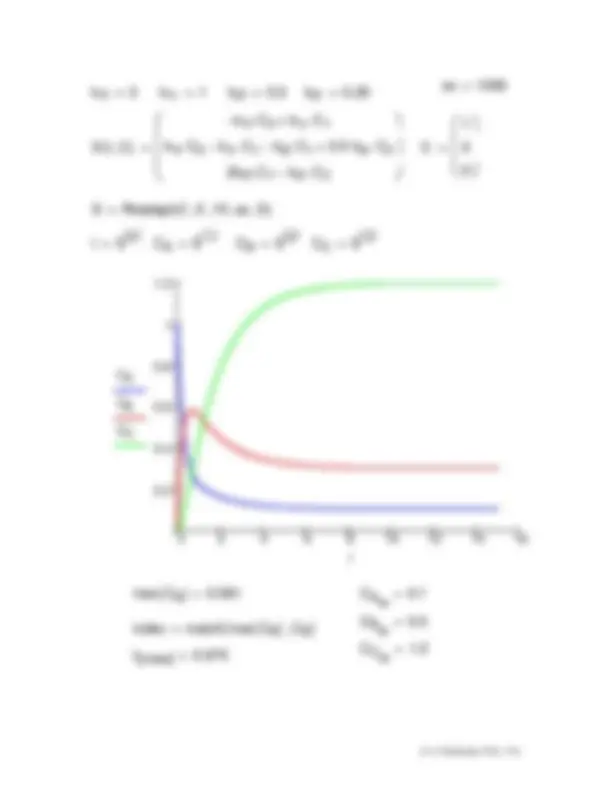



Study with the several resources on Docsity

Earn points by helping other students or get them with a premium plan


Prepare for your exams
Study with the several resources on Docsity

Earn points to download
Earn points by helping other students or get them with a premium plan
Community
Ask the community for help and clear up your study doubts
Discover the best universities in your country according to Docsity users
Free resources
Download our free guides on studying techniques, anxiety management strategies, and thesis advice from Docsity tutors
Material Type: Quiz; Professor: Rockstraw; Class: Chemical Kinetics and Reactor Engineering; Subject: CHEMICAL ENGINEERING; University: New Mexico State University-Main Campus; Term: Spring 2005;
Typology: Quizzes
1 / 2

This page cannot be seen from the preview
Don't miss anything!


D. A. Rockstraw, Ph.D., P.E.
Ch E 441 Chemical Kinetics and Reactor Engineering
Quiz 7 & 8 Closed Book/Notes
Consider the liquid-phase, elementary reactions A B C
rxn rxn 2
1 2 ←⎯ → ⎯ ←⎯ →⎯ which are
being carried out in a batch reactor. The reaction rate constants are as follows: k (^) 1Af = 3
min
subscript on the rate constants identify (1) reaction number, (2) species upon which the
rate law is based, and (3) whether the constant if for the forward or reverse step. The
initial concentration of A is 1 M.
(7) In class: Set up the mathematics of the solution to this problem. Show all species
mole balances with the appropriate net rate law substituted into each. Be sure to apply
the stoichiometric coefficients where necessary.
(8) Take home (due at the Ch E Office by noon tomorrow): Solve the system of
equations (corrected if necessary). Identify (i) the maximum concentration of
intermediate species B, (ii) how long after the start of the reaction this maximum occurs,
and (iii) the steady-state concentration of each species.
SOLUTION
Mole Balances with net rate laws
A:
( )
Af A Br B
b Br
a Af
A
k C k C
r r dt
dC
1 1
1 1
( ) ( )
( )
Af A (^ Br Bf )^ B ( )^ Cr C
Af A Br B Bf B Cr C
c Cr
b b Af Br Bf
B a
k C k k C k C
k C k C k C k C
r r r r dt
dC
2 2
1 1 1 2
2 2
1 1 1 2
1 1 2 2
C:
( )
Bf B Cr C
b Bf Cr
C c
k C k C
r r dt
dC
2 2
2 2
D. A. Rockstraw, Ph.D., P.E.
ss
ss
ss
t